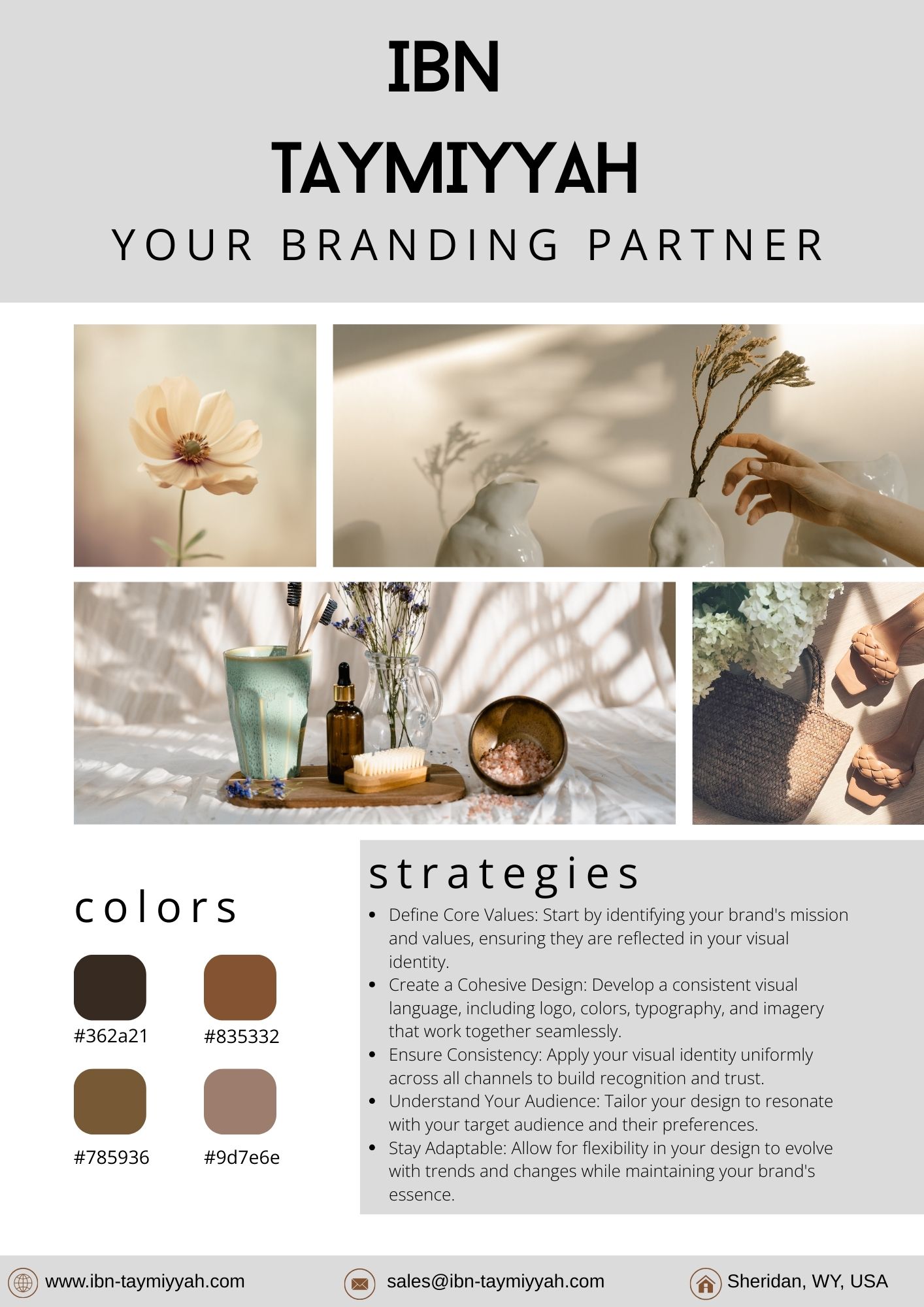In today’s fast-paced and competitive business environment, offering high-quality products or services is no longer enough. To stand out, you need a strong visual identity that not only reflects your brand’s mission and values but also leaves a lasting impression on your audience. A visual identity is more than just a logo; it’s a visual language that conveys your brand’s personality in a way that resonates with your customers.
In this article, we’ll explore how to build a strong visual identity for your brand, starting with the basics and progressing to the finer details that ensure your identity thrives now and in the future.
1. Understand Your Brand’s Values and Message
Before embarking on designing your visual identity, it’s crucial to have a deep understanding of your brand’s core values and message. These elements will serve as the foundation for your design and will influence the visual elements you choose. Your brand’s message forms the basis for every visual decision you make, from colors to shapes and fonts.
Tips for Getting Started:
· Identify your brand’s core principles and ensure they are reflected in your design.
· Know your target audience deeply; every visual choice should resonate with their needs and expectations.
2. Logo Design
The logo is one of the most critical components of your visual identity. It represents your brand in the minds of your audience, making it the first element they will notice. Your logo needs to be unique, simple, and strong at the same time. It should make an immediate and lasting impression on the viewer.
Tips for Logo Design:
· Keep it simple and clear; a simple logo is easier to remember and instantly recognizable.
· Choose colors thoughtfully, as each color has its own psychological impact and plays a role in the emotional response of your audience.
· Ensure your logo is versatile enough to work across various media, whether large or small, printed or digital.
3. Carefully Select Colors
Colors are powerful tools in visual identity. They significantly influence emotions and perceptions. Therefore, it’s essential to choose colors that align with your brand’s message and values. The right colors can convey your brand’s personality and help create an emotional connection with your customers.
Tips for Choosing Colors:
· Select colors that reflect the essence of your brand and its core values.
· Maintain consistency in the use of colors across all your channels.
· Avoid overusing colors; a balanced color scheme enhances the strength of your identity.
4. Choose and Align Typography
Typography, like colors, plays a pivotal role in communicating your brand’s character. The fonts you select should reflect your brand’s personality and be easy to read. Typography also needs to create a seamless visual experience for your audience.
Tips for Choosing Typography:
· Opt for classic, clear, and legible fonts in various sizes.
· Ensure consistency in font usage across your website, social media, and print materials.
· Avoid using too many fonts; stick to two or three to maintain balance.
5. Consistency Across All Platforms
Consistency is key when building a strong visual identity. Your visual elements must be uniform across all platforms, whether online or offline. Your audience should instantly recognize your brand, no matter where they encounter it.
Tips for Platform Consistency:
· Use the same logo, colors, and typography across all your social media platforms, website, and print materials.
· Ensure that your design is responsive and adapts seamlessly to all screen sizes, especially mobile devices.
· Maintain a professional and cohesive look on all platforms.
6. Deliver a Unique Visual Experience
A strong visual identity goes beyond just aesthetics; it also focuses on user experience. The visual elements should not only look good but also make interactions intuitive and enjoyable. Ensuring an optimal user experience can significantly impact the perception of your brand.
Tips for Enhancing User Experience:
· Design user interfaces that are smooth, simple, and easy to understand.
· Enhance interactions by using visual elements that are functional and easy to navigate.
· Ensure fast load times and effortless browsing across your site or platform.
7. Stand Out in a Competitive Market
Finally, the ultimate goal is for your brand to stand out. A unique visual identity will make your brand unforgettable. The key is to innovate and avoid following the crowd. Your visual identity should reflect who you are, not mimic others.
Tips for Standing Out:
· Develop a creative and innovative design that sets your brand apart.
· Avoid imitating others; instead, focus on making your brand’s visual identity truly yours.
· Prioritize uniqueness and originality in every visual element of your brand.
Conclusion:
Building a strong visual identity is essential for the success of any brand. A well-crafted visual identity strengthens your brand’s presence and helps establish a deeper connection with your audience. By focusing on the details outlined in this article, you can create a visual identity that stands out, remains consistent, and evolves with your brand’s growth.
At Ibn-Taymiyyah, we offer comprehensive support in crafting innovative and cohesive visual identities that truly represent your brand’s essence and contribute to your digital success.

